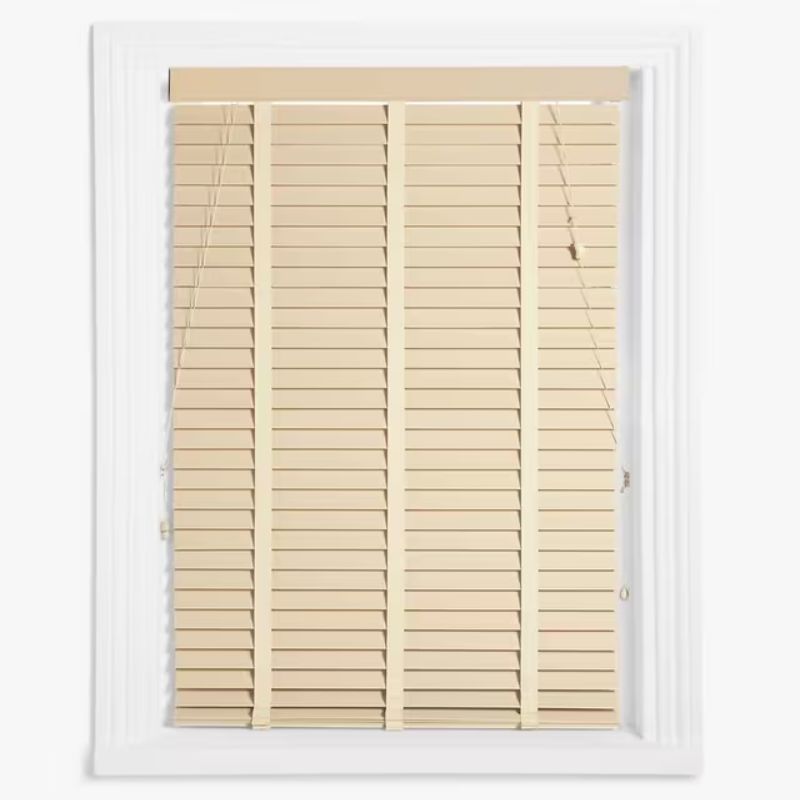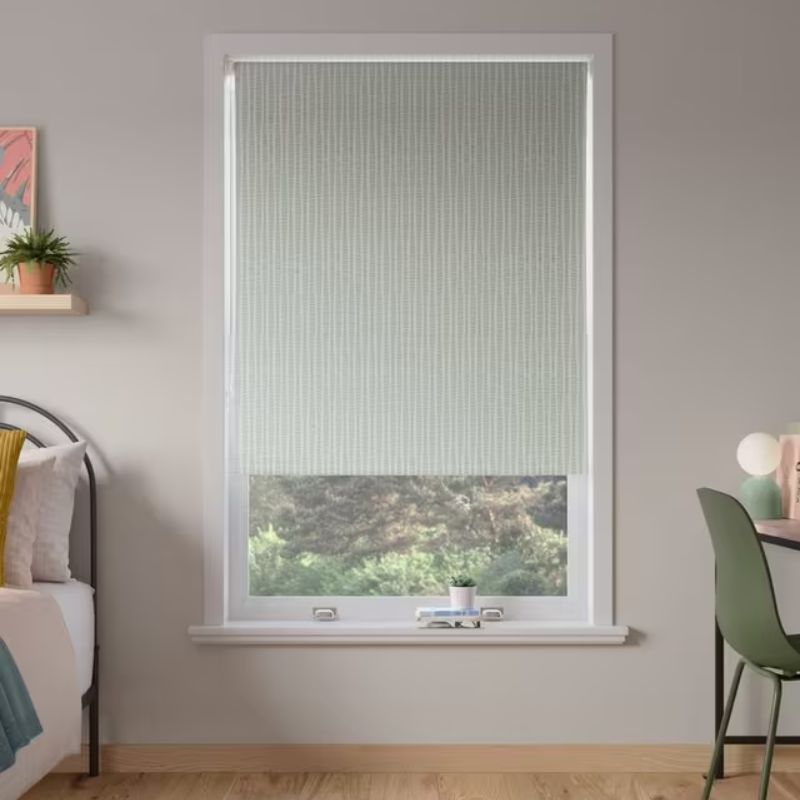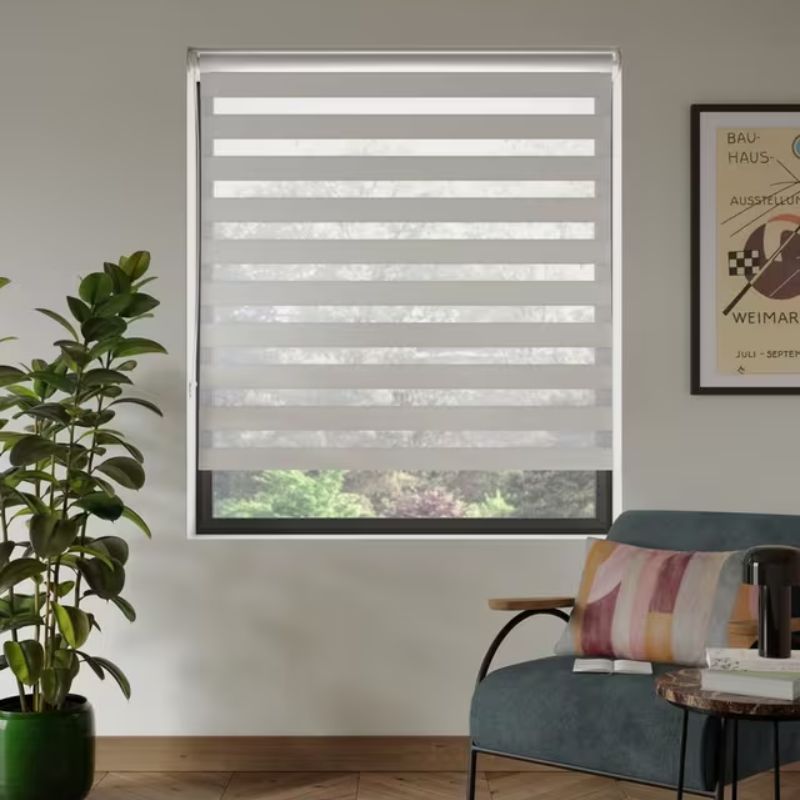10 Different Types of Blinds You Need to Know About Before Making a Decision on How You Dress Your Windows
From relaxed Romans to woven blinds, these styles take the window treatment from purely practical to elevated — even playful


Window blinds, admittedly, may not be the most exciting part of decorating a room, but the most stylish types of blinds can actually add plenty of design appeal, while serving their much-needed practical purpose, of course.
While choosing between curtains vs blinds is your first port of call, familiarizing yourself with the most stylish types of blinds will also help narrow down your options. From classic Venetian to soft Romans, woven blinds to rollers, the type of blind you opt for will largely depend on how much privacy you wish to create, and how much control over natural light you need.
And so, we've sifted through the extensive variations of window blinds, narrowing them down to the most stylish types of blinds worth knowing about. Below, interior designers and design experts break down each of these top picks, to help you choose the right style for your space.
1. Venetian Blinds
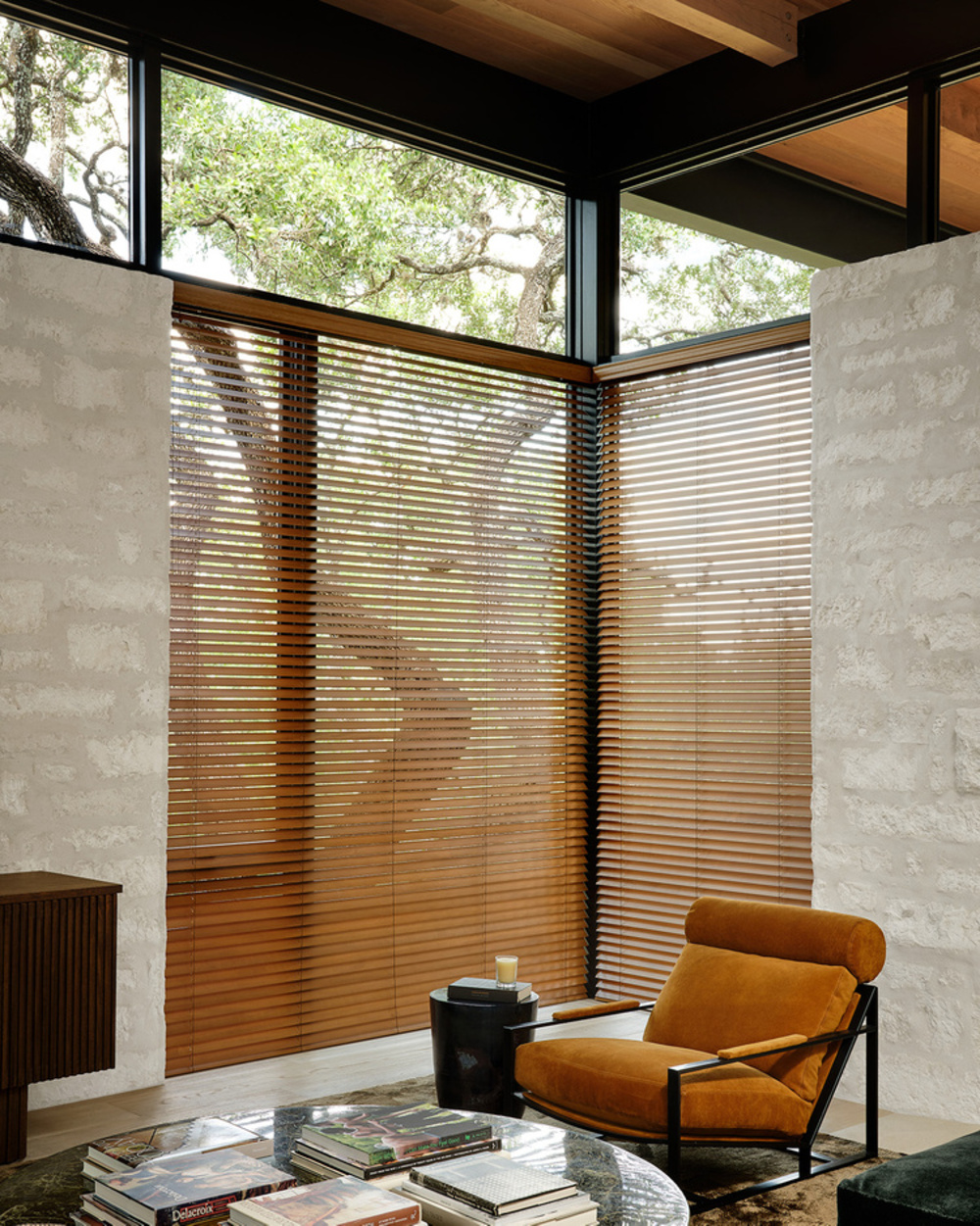
Whether wooden, faux wood, or aluminium, Venetian blinds are a classic style of blind that balances privacy and light.
Among the various types of blinds available, Venetian blinds are a classic choice, allowing for light levels to be altered by adjusting the slats.
"Venetian blinds are made of horizontal slats which can be tilted up or down with the twist of a rod, offering increased privacy and customized light control throughout the day," explains Chloe Dacosta, design manager at UK-based Blinds 2 Go.
Venetian blinds are often made from wood, but faux options are also available. “Real wood blinds are timeless, adding a cozy, elegant feel to a space, making them an ideal choice for wide windows in your living room or dining room," continues Chloe. "Faux blinds are an ideal option for bathrooms and kitchens — durable and waterproof, they won’t warp or crack as a result of steam or humidity.”
Interior designer Sophie van Winden, co-founder of Owl Design recalls one a project she specified Venetian blinds for as a bathroom window treatment. "The bathroom was quite overlooked," she describes, "so the client wanted the option to manipulate the blind to see the sky while sitting in the bath, but not being seen themselves. The louvres on wooden Venetian blind allowed them to do that."
The Livingetc newsletters are your inside source for what’s shaping interiors now - and what’s next. Discover trend forecasts, smart style ideas, and curated shopping inspiration that brings design to life. Subscribe today and stay ahead of the curve.
2. Roman Blinds
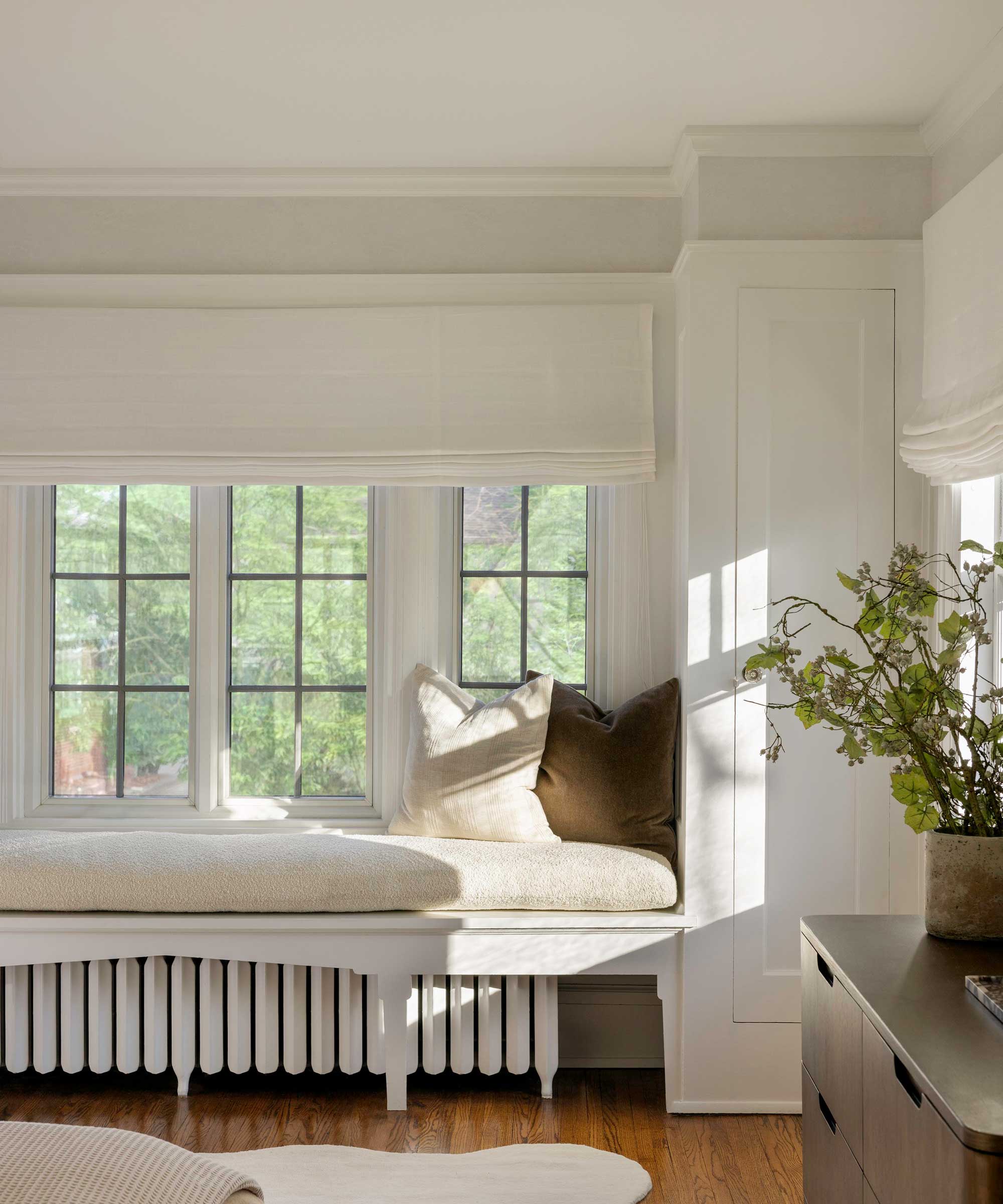
Roman blinds allow you to add softness to your space while providing full privacy when needed.
A popular window treatment trend for adding softness to a space, Roman blinds enhance a room with texture, color, and pattern.
"Roman blinds are made from soft folds of fabric that stack evenly when raised, offering a timeless, elegant look," explains Yvonne Keal, senior product manager at Hillarys. "They’re perfect for living spaces and bedrooms where you want warmth and a softer, more decorative finish. They can be interlined for added insulation or made with a blackout lining, ideal for light-sensitive spaces, but are best avoided in damp environments like bathrooms."
Interior designer Jenny Luck regularly uses Roman blinds in her projects. "Not only are they decorative, but they are also a great solution for dressing the window without compromising on the heat output from radiators, something a lot of clients may not consider when using curtains," she explains.
3. Relaxed Roman Blinds
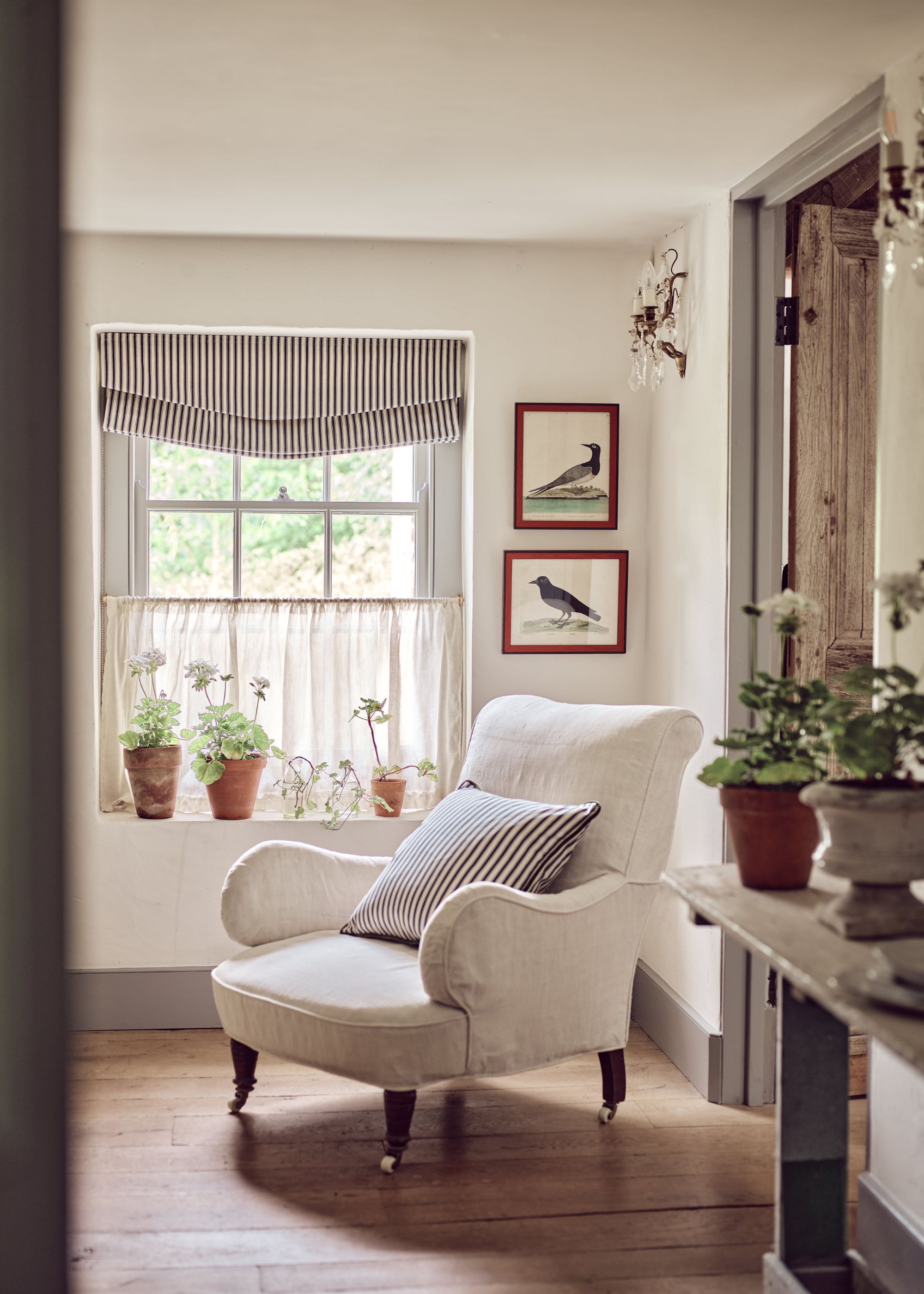
For a more laid-back look, relaxed Roman blinds are a favorite among designers.
Another variation of Roman blinds, relaxed Roman blinds are a slouchier alternative — a great way to make a space feel more inviting and lived-in, and a stylish living room window treatment.
"Roman blinds are so versatile, they can be simply practical and neat, or you can go for a relaxed, slouchy look that is still fully functioning," explains textile designer Tori Murphy. Even if a room doesn't necessarily need the functional benefit of blinds, "it is still an opportunity to create an extra layer of color and texture to what can often be stark, angular window spaces," she adds.
"We love to use relaxed Roman blinds within period homes, or just to create another layer of drama through window treatments," adds interior designer Samantha Watkins McRae. "Relaxed Romans have a wonderful balance of a clean front with almost a swag finish — in the right fabric, they can create a statement."
4. Voile Roman Blinds
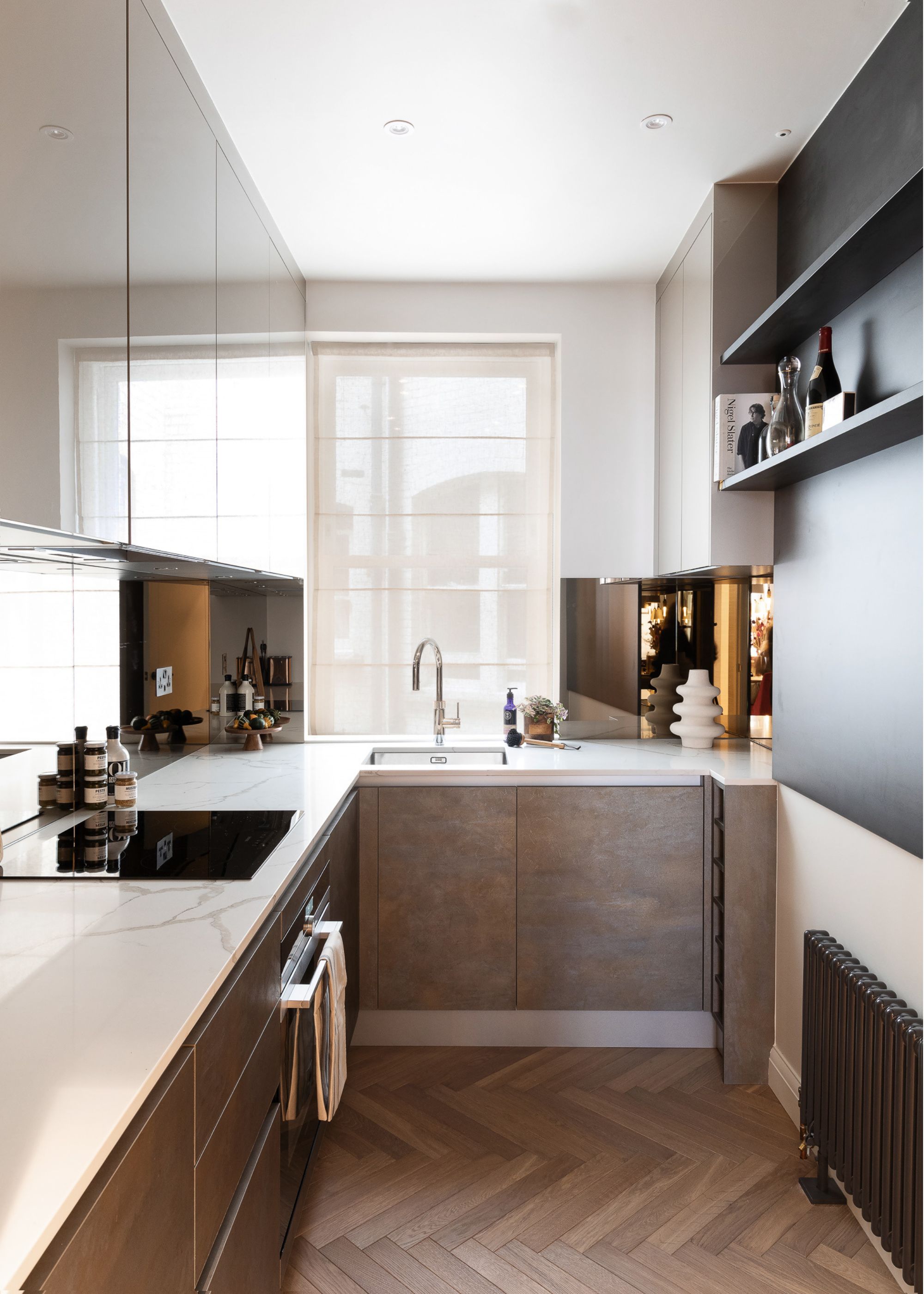
Voile Roman blinds allow privacy while still filling a room with natural light.
If you're drawn to the tactile appearance of Roman blinds, but don't want to fully block daylight when the blinds are drawn, it's worth considering voile Roman blinds, which are made from sheer fabric that allows a soft, filtered light. Above, designer Samantha Watkins McRae used this type of blind as a kitchen blind idea for added privacy.
"Voile Roman blinds offer the same soft, tailored appearance but in a sheer, lightweight fabric," explains Yvonne Keal. "They gently filter daylight while providing privacy during the day, making them a great choice for open-plan spaces or lounges. However, because they’re translucent, they’re best layered with curtains or heavier blinds for full night-time privacy."
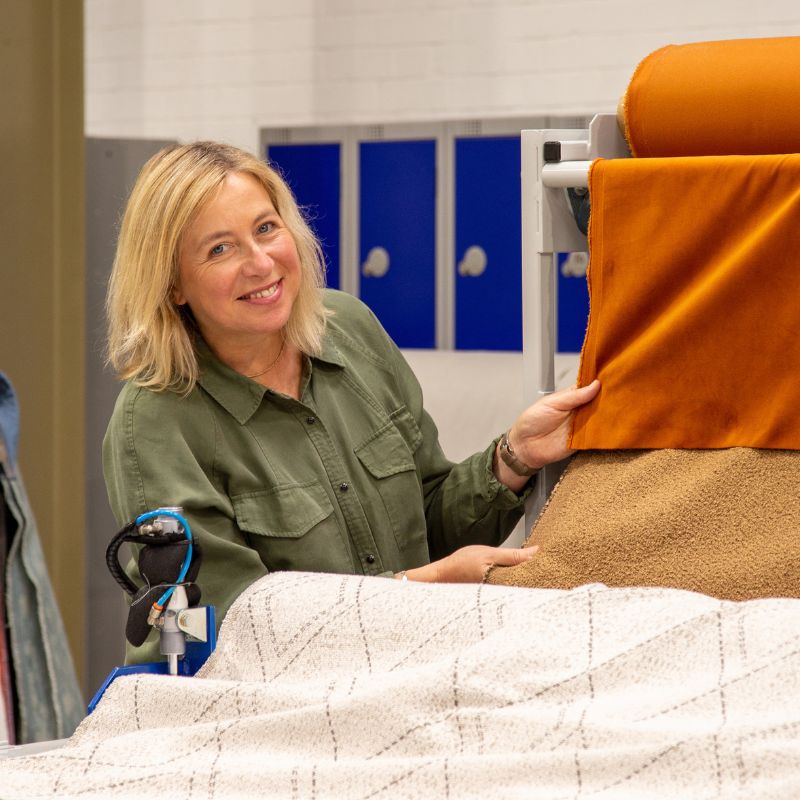
Yvonne is a product management specialist with over 20 years’ experience in the interiors industry. Since joining Hillarys in 2003, Yvonne has successfully launched many window dressing collections, including roller blinds, vertical blinds, Roman blinds, curtains, and voiles. Yvonne provides practical advice to help customers better understand which styles are best for their windows.
5. Woven Blinds

These bamboo blinds add textural interest and warmth to this dark living room, while ensuring light can still come in.
If you're looking for types of blinds that add texture, look no further than woven blinds. Often crafted from materials such as bamboo, woven blinds add organic appeal to a space and are an effective way to soften spaces that feature solid materials and harsh lines. Sometimes referred to as 'chik' blinds, they've experienced somewhat of a resurgence in recent years.
"Made from natural materials, including elegant bamboo and delicate grasses, these blinds feature intricate woven designs, rich textures, and balanced shades and grains to provide a soft, sophisticated look for any space," adds Chloe Dacosta of Blinds 2 Go.
“They're a great way to add a decorative feature but can also be enhanced to offer a more practical option too — from adding electric or no-drill upgrades to adding a blackout lining for tailored light control," adds Chloe.
6. Vertical Blinds

Vertical blinds are a good choice for large windows, allowing you to control light throughout the day.
Perhaps a lesser-used type of blind, the experts all agree that vertical blinds are a good choice for filling large, floor-to-ceiling windows, offering both light control and privacy.
“Vertical blinds feature fabric louvres that hang down from the headrail of the blind," explains Chloe Dacosta. "They're ideal for large, wide windows and patio doors. They're also super versatile as the louvres can be tilted to control light and privacy or even pulled into a neat stack to allow for an uninterrupted view outside."
“Coming in a huge range of materials and colors, vertical blinds are a great option for almost any aesthetic, whether you want a more practical blackout blind or a light filtering look," she continues. "Even better, vertical blinds are one of the easiest to keep clean and can easily be dusted or wiped to keep them looking their best."

As the Design Manager at Blinds 2go, Chloe Dacosta plays a pivotal role in bringing creativity to life through innovative digital styling and trend-focused design. Working closely with the design team, Chloe specialises in CGI design, crafting visually stunning imagery for the website. Her work includes researching current trends, collaborating with artists, and repurposing styled spaces to inspire customers.
7. Roller Blinds

Available in a range of fabrics and colors, roller blinds are incredibly versatile for any room in your home.
Roller blinds are a simple and highly versatile style of blind that allows windows to be uncovered during the day and fully covered at night. Whether used as a kitchen or bathroom window treatment, they make a good choice in pretty much any room, and are also a durable option since they're easy to clean.
"Roller blinds are incredibly functional and come in a wide variety of finishes, from blackout fabrics ideal for bedrooms and kids' rooms, to moisture-resistant styles perfect for bathrooms and kitchens," explains Yvonne Keal. "They can also be fitted into a perfect fit frame, which clips into the window frame for a no-drill option. Their minimalist design makes them easy to clean and highly durable, especially in high-traffic areas."
8. Pleated Blinds
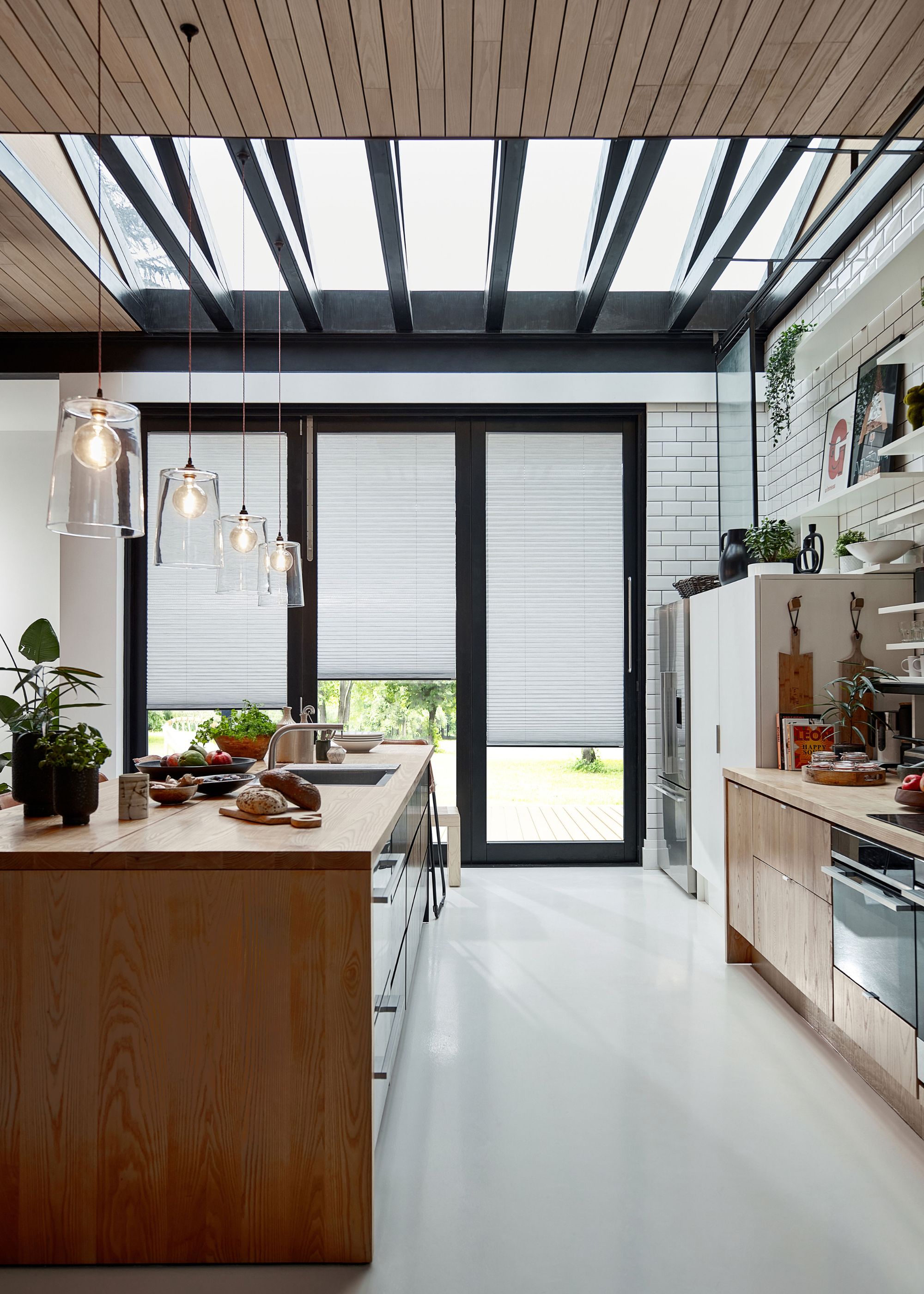
Pleated blinds are a go-to in bright kitchens and dining spaces, allowing clever heat regulation.
If you're looking for a more technical type of blind, pleated blinds serve as a modern window treatment, while helping to regulate heat through their clever design.
"Pleated blinds feature crisp concertina folds that stack neatly when raised," explains Yvonne Keal. "They're space-saving and highly versatile, especially well-suited to conservatories, shaped windows, and bi-fold doors."
She adds that this type of blind is also available with solar-reflective and thermal coatings, which helps to regulate indoor temperatures. "Duette® blinds, a specific type of pleated blind with a unique honeycomb structure, are particularly energy-efficient; in fact, they can reduce heat loss by up to 55%, making them a smart choice for keeping homes warm in winter and cool in summer," she adds.
9. Day and Night Blinds

If you want to have more control over privacy and lighting, choose day and night blinds, which can switch between fully covered and filtered.
Day and Night blinds are also well-suited to social rooms, such as open-plan kitchen extensions, allowing you to adjust them to suit your desired level of light and privacy throughout the day.
"Zebra blinds, also known as Day and Night blinds, are a clever hybrid of sheer and opaque horizontal panels," explains Yvonne. "As you adjust the blind, the fabric layers glide past each other, allowing you to switch between light filtering and full privacy."
"You can align the sheer sections for soft daylight and outward visibility, or overlap the opaque stripes to block views and dim the room," she adds. "They’re perfect for living spaces where you want to maintain light control and privacy throughout the day."
10. Panel Blinds
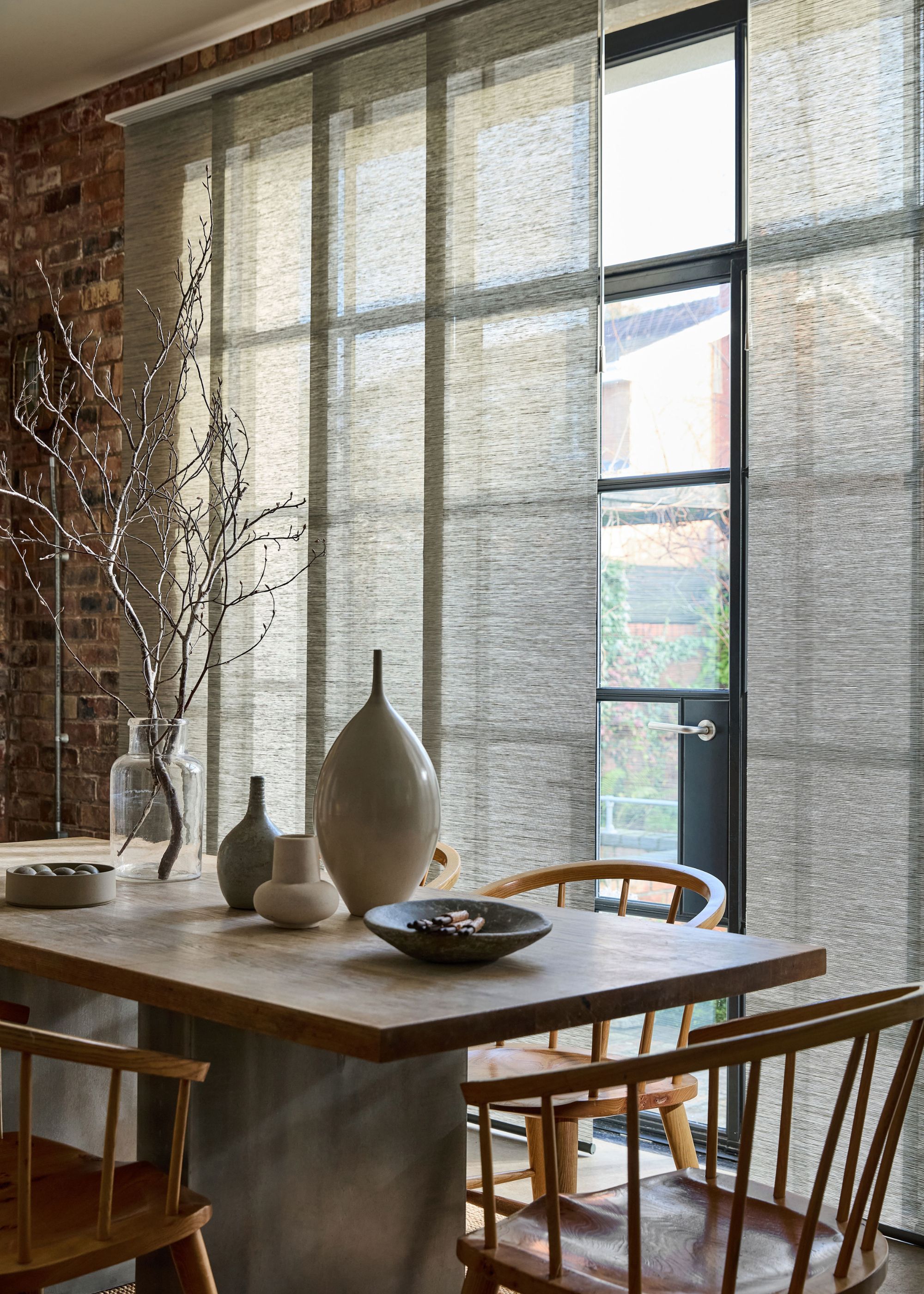
Panel blinds hang vertically, enabling you to expose the window as much as you like through their sliding mechanism.
Similarly, panel blinds allow you to customize how much of your window is covered, but with separate movable vertical panels.
“Panel blinds are ideal for dressing large windows and doors with ease and make a great alternative to vertical blinds for a more modern twist," says Chloe Dacosta. “They’re stylish and functional as well as super easy to use, featuring wide fabric panels which glide along a track so you can tailor the amount of light and privacy in your space."
FAQs
Which Type of Blind Is Most On Trend?
Current window blind trends are favoring styles that offer textural interest and a more relaxed look. In keeping with wider interior design trends for lived-in, layered spaces, types of blinds including relaxed Roman and woven blinds are currently favored by designers.
As for what's out: "Venetian blinds are not as favorable and tend to feel quite dated," says designer Jenny Luck.
"It feels like we are heading into a more relaxed, tactile look," echoes Tori Murphy. "Softer fabrics that drape well yet still provide the desired amount of privacy. Linen, lace, unexpected fabrics that add another layer of interest to your home."
"Bamboo and hemp blinds have been creating more interest with clients," adds Samantha Watkins McRae. "Aside from the ethically conscious and sustainable stance, they also offer a natural layering to a space, depending on the scheme you are trying to achieve with a lovely softness and patterning."
That said, designers note that smart blinds are also becoming more popular. "We have seen much more interest over the last few years in smart blinds, driven by smartphone apps or voice-activated," says Samantha. "Not just through the ease of technology, but depending on where and how the windows are placed, they can provide a practical solution for ease of access."
Which Type of Blinds Are Best for Seeing Out but Not in?
"If you're looking specifically for blinds that let you see out while preventing others from seeing in during the day, voile and Day and Night blinds are excellent choices," says Yvonne Keal.
"Their sheer or alternating fabric designs allow natural light in and maintain outward visibility while obscuring the view from outside," she continues. "Just be aware that this daytime privacy effect reverses at night when interior lights are on, so for full privacy, especially in overlooked rooms, we recommend layering with curtains or pairing with a secondary blind."
“Magic screen blinds, such as Blind 2 Go's Oculus Alabaster Magic Screen Roller Blind, are perfect for stopping nosey neighbours but still letting you enjoy the view outside from within your home," adds Chloe Dacosta. “These blinds are made from a special polyscreen fabric with a woven structure which only allows one-way viewing – the ideal option for rooms which are overlooked."
Which Type of Blind Lasts the Longest?
Ultimately, how long different types of blinds will last for comes down to how well they're cared for with cleaning, and choosing the right style for your space in the first place.
Fabric styles, such as Roman blinds, may not be best suited to damp environments like bathrooms, whereas aluminum or faux wood options are often more resistant and easier to keep clean.
"Aluminium Venetian blinds are well-known for being one of the most durable styles, crafted from hardwearing, rustproof aluminium," adds Chloe Dacosta. "These blinds are resistant to damage such as warping and corrosion, making them an ideal long-term choice for kitchens and bathrooms."
Not only do window blinds serve obvious practical benefits — offering privacy and limiting natural light when needed — but they're also a great way to add design interest to your space, if you pick the right types of blinds, that is.
Now you know the style you want, spend some time familiarizing yourself with how to measure a window for blinds, to avoid falling for common installation mistakes.
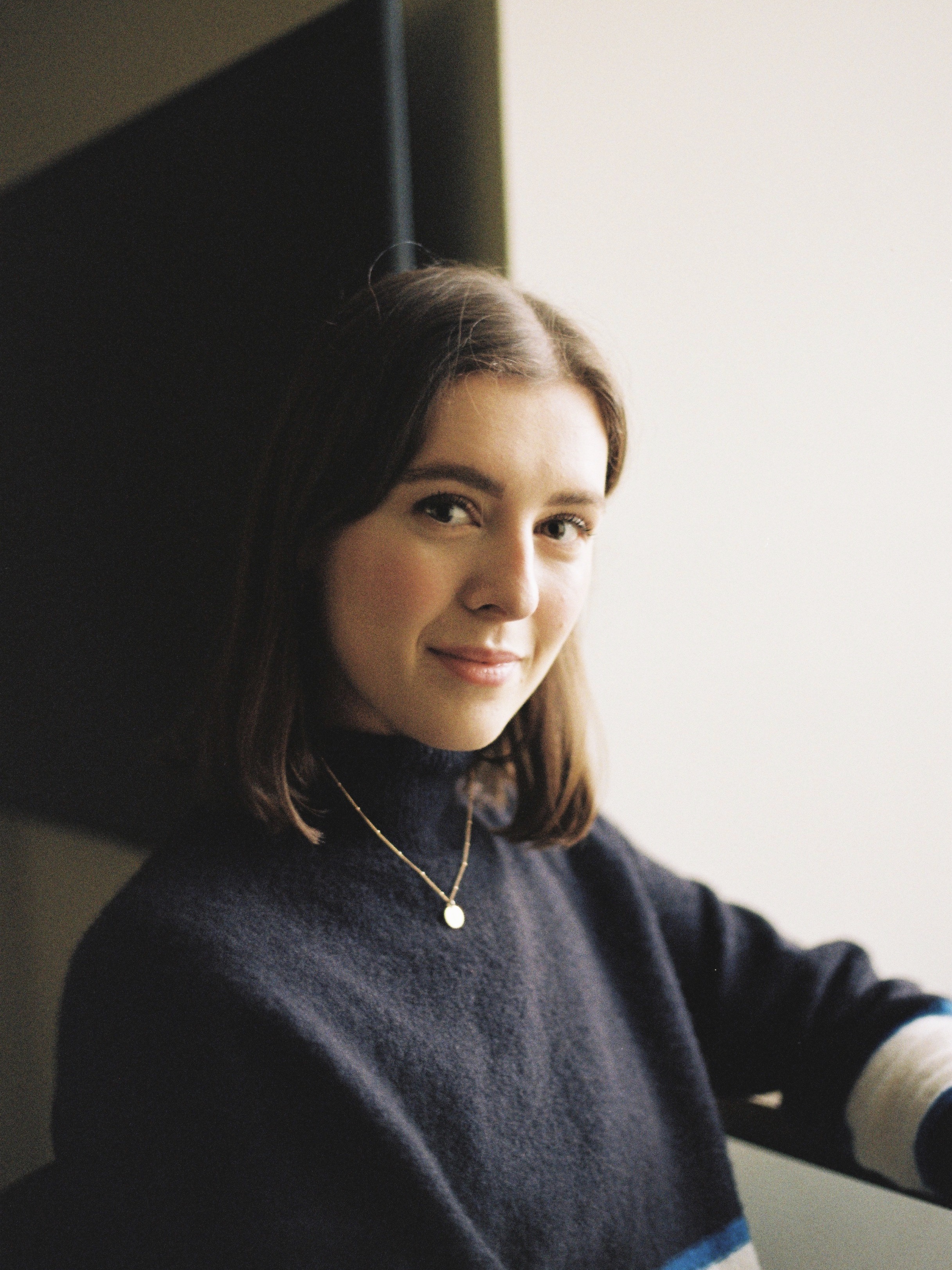
Emily is a freelance interior design writer based in Scotland. Prior to going freelance in the spring of 2025, Emily was Homes & Gardens’ paint and color editor, covering all things color across interiors and home decor for the Homes & Gardens website. Having gained specific expertise in this area, Emily is well-versed in writing about the latest color trends and is passionate about helping homeowners understand the importance of color psychology in home design. Her own interior design style reflects the simplicity of mid-century design and she loves sourcing vintage furniture finds for her tenement flat.
